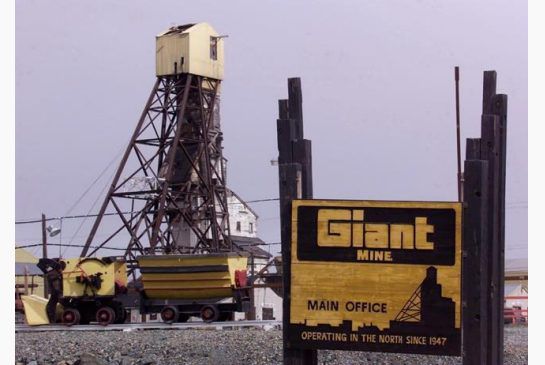Mine Water May Never Recover From Contamination
Published on by Water Network Research, Official research team of The Water Network in Government
Water around Giant Mine in N.W.T. may never recover from arsenic contamination
A study of lakes near one of Canada's most contaminated industrial sites suggests that the water around Yellowknife's Giant Mine won't return to its natural state for generations - if ever.
"This is going to be a contaminated site indefinitely," said Jules Blais, a University of Ottawa professor and lead author on a paper just published by the Royal Society of Canada.
 "Even when we've looked at other parts of Canada that have been heavily affected by mines, including Sudbury, we've never seen these kinds of impacts."
"Even when we've looked at other parts of Canada that have been heavily affected by mines, including Sudbury, we've never seen these kinds of impacts."
Blais and his colleagues used sediment cores to examine the impact of the gold mine's heavy arsenic contamination on the tiny bugs and plants that live in Pocket Lake, one of the small lakes that ring the Giant property.
The Giant Mine operated from 1948 to 2004 and produced about seven million ounces of gold. It also left behind an environmental nightmare that includes underground caverns filled with 237,000 tonnes of arsenic and a 95-hectare surface site poisoned with 13.5 million tonnes of arsenic-contaminated tailings.
Blais estimates another 20,000 tonnes of arsenic blew out of smokestacks and ended up in land and water in the mine's early days. Pocket Lake sediments from the 1960s contain up to three per cent arsenic. That means a handful of dried mud weighing about a kilogram could contain up to 30 grams of the metalloid.
A lethal dose would be between 80 and 240 milligrams for a Canadian man of average weight.
"We don't ever see values like that," Blais said. "These are some of the highest arsenic concentrations I've ever seen in a natural setting."
Even though the mine has been dormant for 12 years, fresh sediments in the lake remain tainted with arsenic at levels that far exceed safety thresholds. Its water, too, is contaminated.
The cores revealed that entire classes of tiny plants and animals — planktons and water fleas — were wiped out during the peak years of contamination.
Those parts of the ecosystem have never come back.
"Usually, after a number of decades after the peak of contamination, normally we start seeing these populations returning. Here, we don't see a recovery."
Yellowknife gets its water from the Yellowknife River, which flows near the mine. But the river's watershed is big enough to keep arsenic levels low. The city also tests for arsenic.
Source: Toronto Metro
Media
Taxonomy
- Arsenic
- Environment
- Mining Development
- Environmental Impact